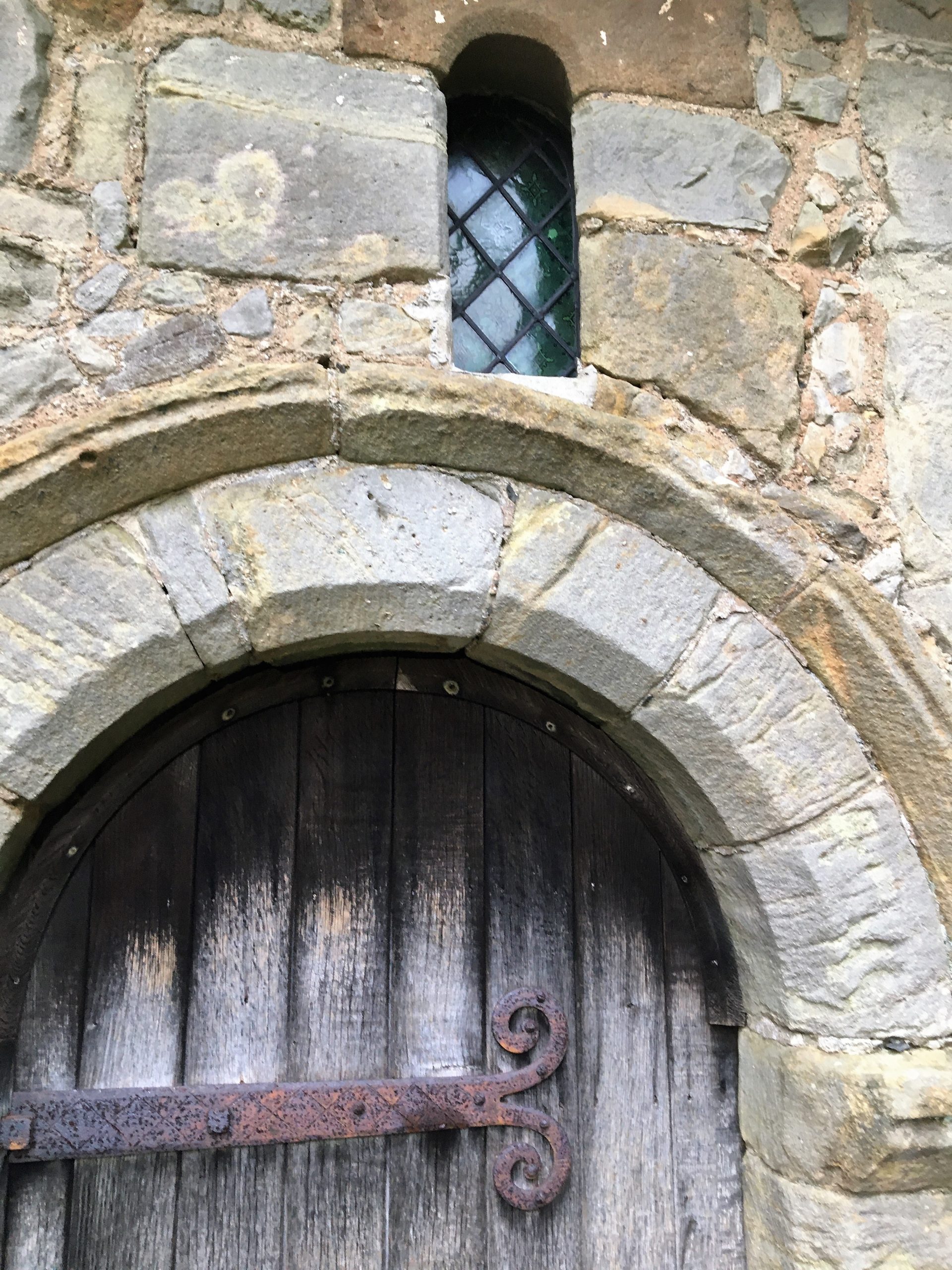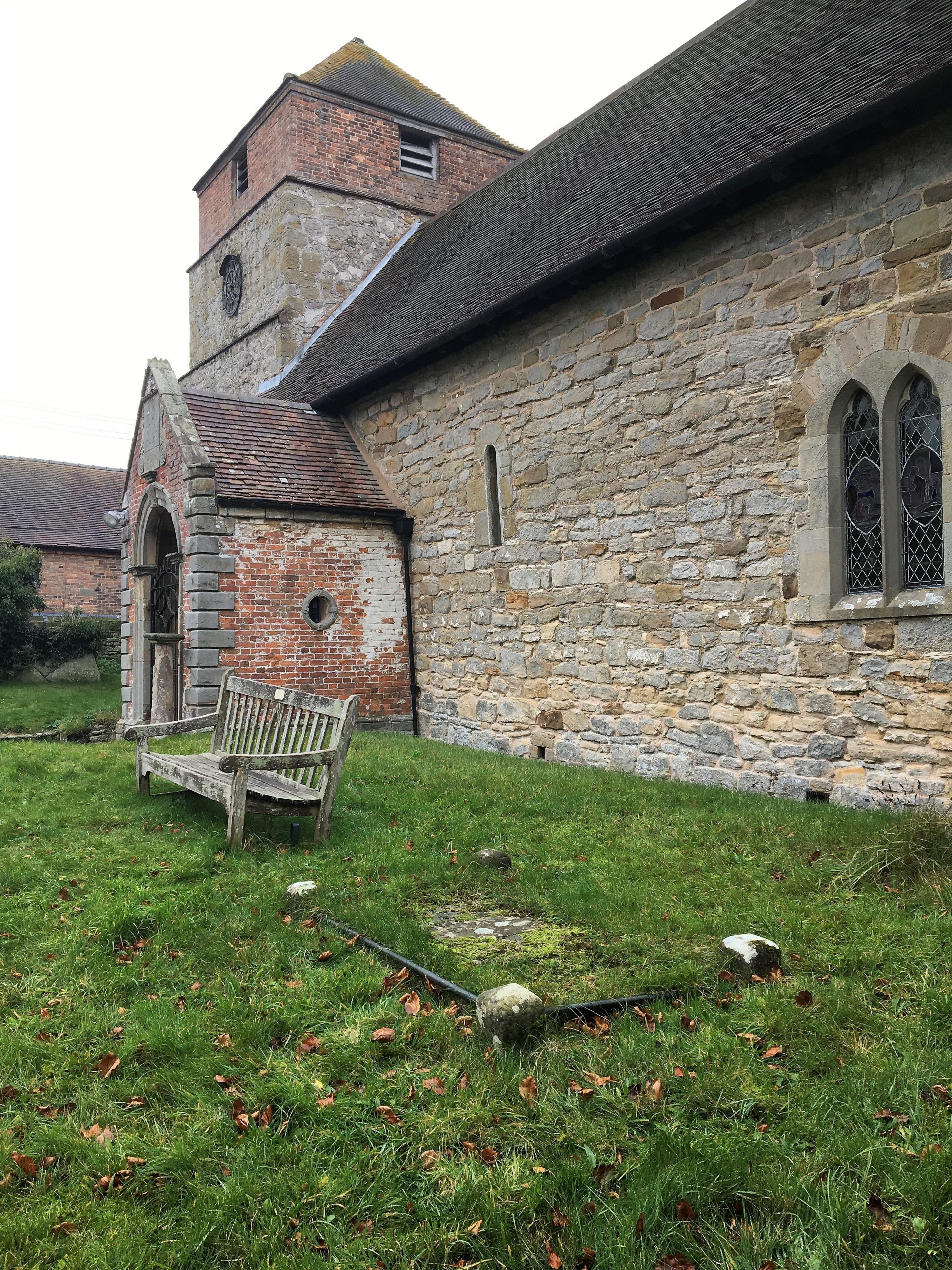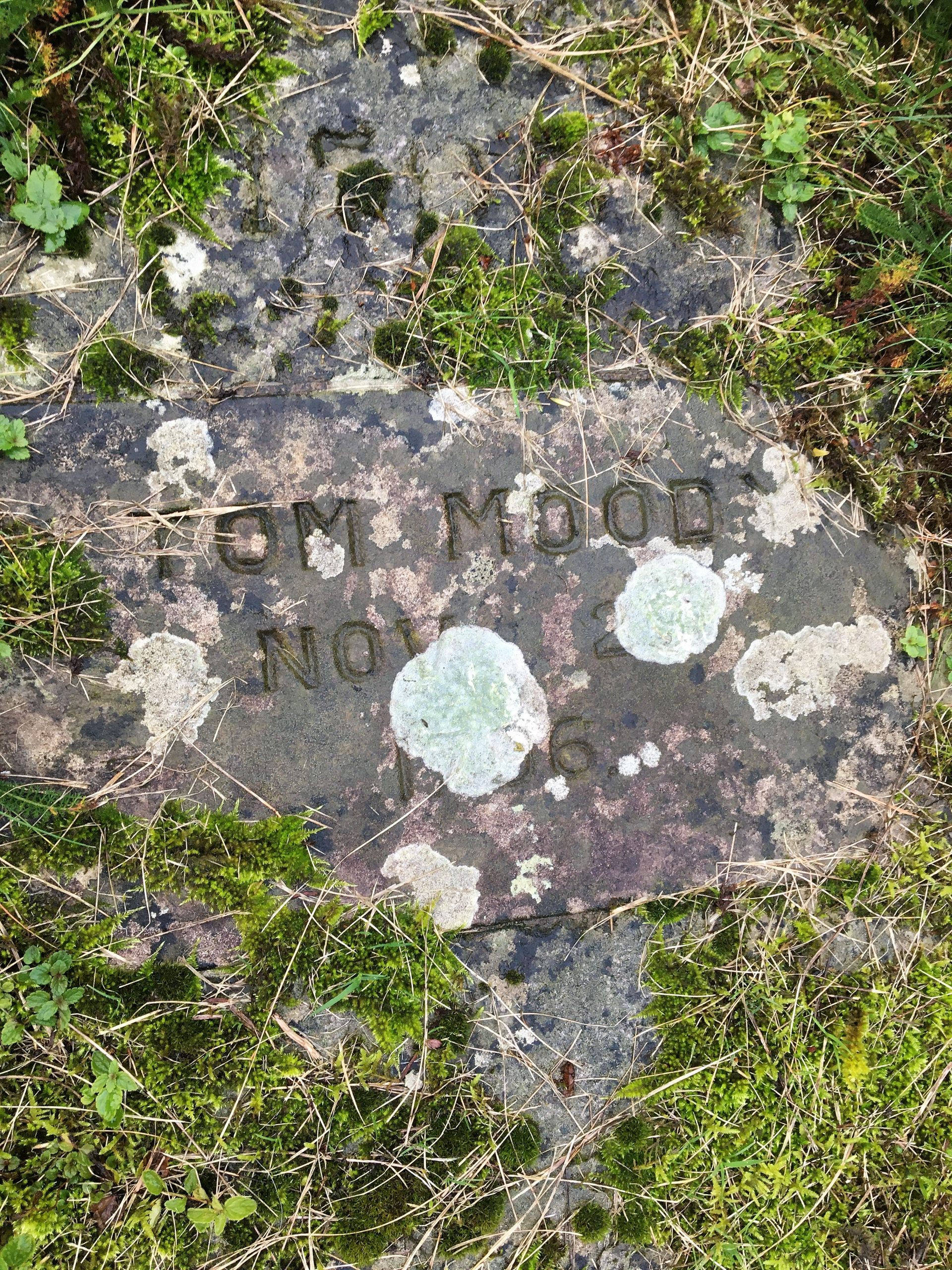Searching for the Lost Villages of Shropshire: Hangsters Gate

‘No traveller comes easily to a lost village. Such empty sites are not well served by public transport and many lack even the convenience of a metalled road along which to approach them. You must be friend to mud, to green lanes and unused footpaths, to rotting footbridges and broken stiles, to brambles and to barbed wire. It is a landscape which has forgotten that human beings may want access, and it may be pardoned for its forgetfulness. It is so long since anyone wanted to come this way’.
M. Beresford in ‘The Lost Villages of England’, 1956
Traces of ‘lost’ villages may be found throughout the British landscape. Some were abandoned fairly recently such as the village of Imber on Salisbury Plain, evacuated by the British Army just before Christmas in 1942 for use as a training ground. Others are ancient such as the Neolithic settlement at Carn Brea in Cornwall.
There are many reasons for their abandonment: war, economic viability, plague, enclosure but it was the shift from arable to sheep farming in the Middle Ages that really impacted upon many rural settlements. Sheep required less labour than agricultural work and folk moved away in search of other employment. Sometimes the earthworks of old settlements reveal themselves in the softly undulating curves of the landscape but old maps, archives, even folk stories and oral tradition may reveal clues about their history.
My late father-in law, a real Shropshire ‘mon’, was an engaging storyteller and would tell of an old lost village not far from his cottage near Broseley in East Shropshire. This village was known to locals as Hangsters Gate, although the village is recorded as Hangstree Gate. Hangsters Gate was situated close to the thriving industrial hub of Coalbrookdale and Broseley. It was once remembered for its ghost, a local character well known in these parts, called Tom Moody. It is unusual that memory of Hangsters Gate is preserved in tales of Tom and his ghost. They have, in part, made it possible to build up a picture of the settlement in the late eighteenth century before its demise.

(The site of Hangsters Gate is not accessible to the public but the landowner gave us permission to visit its whereabouts in the private parkland. We were asked not to take photos of the park so I will do my best to describe what we found).
Hangsters Gate
It was a murky, grey November afternoon, the leaves of autumn tumbling through the drizzle when myself, husband Chris and Dan the Dog set off from the ancient church of St Giles. We followed a muddy footpath towards the old hamlet of Shirlett, once part of a royal forest, passing through young oaks and field maples before turning into the private estate that encloses the site of Hangsters Gate. My husband Chris grew up in this area and knows it well. Happy to be back on ‘home turf’ he led us through the mist into beautiful parkland, typical of the English country estate and amongst the trees and the grazing sheep we came to the site of the old village, now just a memory and a few lumps and bumps under the grass.
In the thirteenth century a hamlet was recorded called Hanestry in the old hunting forest of Shirlett, east of Much Wenlock. By 1540 it was recorded as Hangstree Gate. This was a period of great change: Henry VIII was dissolving the monasteries, executing Cromwell and marrying Catherine Howard, also later executed. The great priory at Wenlock was about to be dissolved and converted into a private house.
The hamlet of Hangstree Gate sat in the lee of another small settlement called Barrow Hill. By 1618 Barrow Hill was supporting ten squatter’s cottages, a school and a row of almshouses. Today Barrow Hill is covered by forestry plantation but there are remains of an old well in the side of the hill, its brickwork still solid, just visible beneath the soil and leaves.

Local folk memory claims that the name ‘Hangsters Gate’ was derived from a gallows that use to stand there. I have been unable to find reference to any gallows and would like to suggest another reason for the evolution of the name ‘Hanestry’ to ‘Hangsters Gate’. A number of roads cut through the settlements and are featured on maps from the early 1600’s. From the sixteenth century fees were demanded for the use of certain roads to pay towards their maintenance and gates or ‘bars’ were erected from which to collect this ‘toll’. This may be reflected today in certain place names such as Tollbar End in Coventry which collected fees for the old London road. I suggest Hangsters Gate had a toll gate hence ‘gate’ was a later addition to the medieval ‘Hanestry’. The reference to ‘Hangstree Gate’ in 1540 suggests that a toll-gate may have been operational in the sixteenth century but I have found no record of this.
This had been an industrious ironworking and mining district since the Middle Ages with numerous smithies and furnaces, many contributing towards the development and flourishing of the ironworks in nearby Severn Gorge. These were the heartlands of the early industrial revolution. The busy river port of Bridgnorth was close by and roads were required to move goods and materials about. Hangsters Gate was on a crossroads of two such roads: one heading north from Willey village in the south and another east towards Broseley and Coalbrookdale.

The church annals record that in 1699 a little girl, baptised Ann, was born to John and Anne Goulden of Hangsters Gate. John worked as a ship’s carpenter, perhaps in the nearby boatyards or workshops down the road at Broseley. His neighbour, a joiner called William Corbett and his wife, had a girl called Mary the following year. It seems that the little community was growing: in 1729 there were eleven cottages recorded at Hangsters Gate. Along with Barrow Hill and nearby Willey village there must have been quite a lively community hereabouts, certainly enough to keep the school running.
We also know that the ‘Marsh Court leet’ was held at Hangsters Gate. Leet courts were descended from the manorial courts of the Middle Ages, trying petty crimes and sorting administrative issues. The leet records show that in 1740 William Corbett of Hangstree Gate owed ‘5 for the peace’ along with similar penalties for Edward, a labourer, William, a blacksmith, a collier called Jacob and a ‘single woman’, Francis Gittens of Barrow. It is tempting to suspect that these fines were all due to the same disturbance and to wonder whether it was anything to do with the local alehouse at Hangsters Gate, the Ring O Bells.
The Ring O Bells
The toll roads were also known as turnpikes and two crossed at Hangsters Gate. Turnpikes were also where fees could be collected and used by the stage coaches that criss-crossed the countryside in the seventeenth and eighteenth centuries between major towns and cities. Coaching inns sprung up along these routes where passengers could be refreshed and horses changed. Here post and mail would be dropped off and people would come to exchange news and gossip. The Ring O Bells at Hangsters Gate may have been one such establishment. It was described as a
‘primitive institution‘ situated ‘on the old road from Bridgnorth to Wenlock… and in the old coaching days was a well-known hostelry and a favourite tippling shop for local notables…’ (Randall).
The Ring O Bells was popular with locals who came to hear any news and read the newspapers. ‘No-one was in a hurry’, Randall writes, ‘especially when the pigs were killed and a ‘pork pie and a jug of ale would be sufficient to keep the coach a good half hour if need be’. This was the reign of George III (1760-1820), the heyday of the stage coach before the railways put paid to this often uncomfortable means of transport.

The old turnpikes at Hangsters Gate are still clearly visible amongst the greenery and sheep tracks. The one to Broseley is a sunken greenway, recognisable by its hollow tract still lined by scrub and trees. The inn was said to be near the dip by where the war memorial now stands. My late father in law remembered playing in the open old brick cellars as a child but these were filled in long ago.
Now all is silent: no rattle of wheels, snort of horses, calls of old men or squeals of children running up the hill to school. Just the drip, drip of rain and bleat of sheep. A soft wind blows between each ghostly silence reminding us that this is Tom Moody country.
Tom Moody
Tom was a local character and a man of his time, the late eighteenth century. As a boy he was apprenticed to a maltster, Mr Adams, in Broseley, before working in the stables of the local hall. Tom’s skills were such he became a whipper-in for the Squire an ardent hunter, earning fame and notoriety for his exploits. He was described as a ‘foxy‘ man: short and wiry with a good humour and twinkling eyes. But Tom was so obsessed with hunting that when the Squire sold his hounds he had little left in his life, spending more and more time at the Ring O Bells, drinking the landlady’s strong ale.
Customers would come from far and wide to meet with Tom. He was very popular, a good storyteller and he could turn a tune but Tom had a ‘spark in his throat’ that could not be put out. Eventually drink got the better of him and he died in 1796. Tom left very specific instructions for his funeral including that his horse, ‘Old Soul’ and his favourite hound should attend the burial in the graveyard at Barrow Church.
It is said that soon after his death two hundred years ago Tom was so unhappy with his lot that he returned to haunt the woods around Hangsters Gate.

Church of St Giles, Barrow, Shropshire
Tom Moody was buried in the old graveyard at St Giles church at Barrow. This is an ancient church; its origins are eighth century and linked to the priory at Wenlock which it served as a chapel or oratory. Evidence of the Saxon church is still visible in some stonework.
Tom’s grave can still be found near the south porch. It is said that on certain occasions Tom’s ghost will suddenly rise from the grave. He strides to the old mounting block by the church gates where a large bay horse suddenly appears. Tom then rides away followed by his favourite hound.

North door Barrow Church 
South Porch Barrow Church with Tom’s grave in the foreground


It was easy to imagine how the little hamlet of Hangsters Gate may have appeared in its heyday: a lively intersection of turnpikes, the men setting off to work down in Broseley, people arriving for the Court leet, children running up to the school on Barrow Hill and Tom trotting along with his favorite hound, to drown his sorrows and memories of happier times in the little ale house, the Ring O Bells.
Hangsters Gate was cleared in 1811 to make way for the new parkland. The people and memories of this place are now mostly gone but it is said that Tom’s still there….
My late father-in-law told how once, when cycling back from his mother’s one evening, he was suddenly aware of movements around the wheels of his bicycle. He said that there was a sensation of something circling him as he rode along in the twilight. When he got home to Barrow he concluded that he had been in the company of Tom Moody and his favourite hound….
——————————————————————————
I would encourage anyone interested in finding out more about a local ‘lost village’ to have a go. It is surprising how much may be discovered. However, as with the writer John Randell’s recollection of Tom Moody, written over seventy years after Tom had died, any sentimental and perhaps, subjective recollections should be born in mind when concluding the evidence. That said, Randell’s writing gives us a flavor of how Hangsters Gate may have developed up until the late 18th/early 19th century, a lively settlement clustered around a busy wayside coaching inn and toll gate, a rural community but one well in tune with the industrial revolution taking place very nearby.
Sources:
J. Randall. Old Sports and Sportsmen ( London: Virtue & Co, 1875)
https://www.british-history.ac.uk/
www.shropshire archives.org.uk
M. Beresford, The Lost Villages of England ( Lutterworth Press, 1956)
Many thanks to Willey Park Estate for allowing us access to the site.
2 thoughts on “Searching for the Lost Villages of Shropshire: Hangsters Gate”
Really interesting. So many villages have been lost to time and it’s often a sad story of how they came to be abandoned. Imber village near me was cleared by the government during the Second World War, and the villagers were promised that they would return. This never happened and they were never able to come back to their homes and lives in the village. So terribly sad.
Fascinating. ‘History’ is so easily lost.